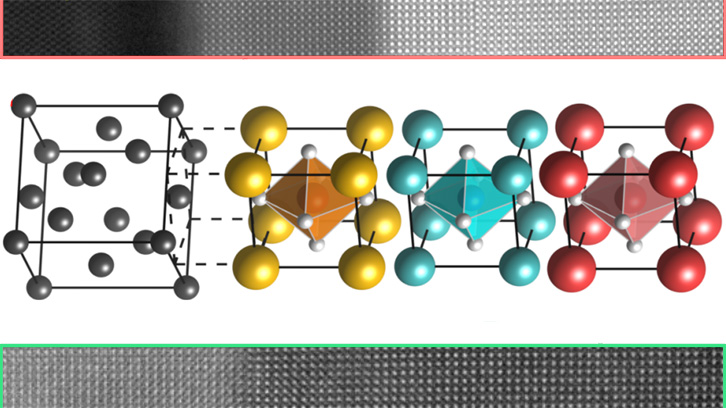Ferroelectric oxides on silicon wafers for new memories

Microelectronics is not only based on semiconducting materials. Insulating oxides are also important; as an example, they are main elements in field effect transistors used in RAM memories. In an insulating oxide, positive and negative ions move slightly when an electric field is applied. The oxide is polarized, and this polarization is reversed when the applied electric field is reversed. It permits defining two states of information, 0 and 1, but removing the applied field ions return to their original positions and the information is lost.
However, some insulating materials are ferroelectrics, presenting spontaneous polarization in absence of an applied external field and switchable by applying a high enough field. The stability of the polarization permits storing non-volatile information, and indeed ferroelectric memories are already in the market, although they are still used in few applications. To increase their relevance it is necessary to enhance the properties and also replace the used ferroelectric oxides, generally lead-compounds, for non-toxic ones.
Figure adapted from M. Scigaj, C.H. Chao, J. Gázquez, I. Fina, R. Moalla, G. Saint-Girons, M.F. Chisholm, G. Herranz, J. Fontcuberta,R. Bachelet, and F. Sánchez, High ferroelectric polarization in c-oriented BaTiO3 epitaxial thin films on SrTiO3/Si(001), Applied Physics Letters 109, 122903 (2016).
Barium titanate, BaTiO3, is an excellent candidate. But its good ferroelectric properties are degraded when the material is integrated with silicon. Our research group has recently achieved significant progress in this area. In particular, by using a complex epitaxial heterostructure as buffer layer between the ferroelectric and Si(001), structural properties close to those of a single crystal and ferroelectric polarization high enough for memory devices was achieved. In this work, we have used a simpler buffer layer heterostructure using SrTiO3 as the main layer.
The BaTiO3/LaNiO3/SrTiO3/Si(001) heterostructure is sketched in the Figure, as well as transmission electron microscopy images that show the epitaxial growth of all layers. The Figure includes polarization loops, confirming that the BaTiO3 film is ferroelectric with a remnant polarization of around 6 μC/cm2. The integration of BaTiO3 on SrTiO3/Si(001) has been a main objective of the scientific community in the past years, and our work constitutes the first experimental demonstration of ferroelectricity by direct electrical measurements.
We receive financial support from the Spanish (MAT2017-85232-R, MAT2014-56063-C2-1-R and SEV-2015-0496) and Catalan (2014 SGR 734) Governments.
Universitat Autònoma de Barcelona Campus
References
M. Scigaj, C.H. Chao, J. Gázquez, I. Fina, R. Moalla, G. Saint-Girons, M.F. Chisholm, G. Herranz, J. Fontcuberta,R. Bachelet, y F. Sánchez, High ferroelectric polarization in c-oriented BaTiO3 epitaxial thin films on SrTiO3/Si(001), Applied Physics Letters 109, 122903 (2016). http://dx.doi.org/10.1063/1.4962836


